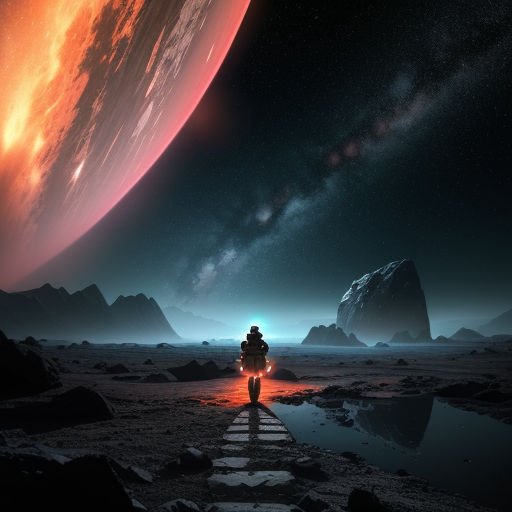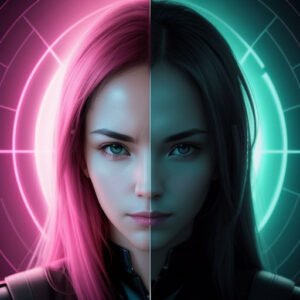Why Looped Futures Keep Twisting Our Heads in Classic Sci-Fi
Decoding the Enigma of Looped Futures in 12 Monkeys
Few sci-fi films capture the dizzying complexity of time travel like Terry Gilliam’s 12 Monkeys. This 1995 cult classic plunges viewers into a dystopian world where past, present, and future are tangled in a web of cause and effect, creating what many call “looped futures.” But what exactly does this term mean in the film’s context, and why does it make the story both fascinating and haunting? Looped futures hint at the cyclical nature of time in 12 Monkeys—a perpetual return to moments that shape the very fabric of destiny. This article peels back the layers to explore how the film’s portrayal of time travel challenges conventional notions and invites us to reconsider the paradoxes of fate and free will.
The Mechanics of Time Travel and Looped Futures in 12 Monkeys
12 Monkeys doesn’t just dabble in time travel—it delves deep into its paradoxical consequences. The concept of looped futures is intricately woven into the narrative, blurring the line between what is predetermined and what can be changed.
Understanding the Time Loop Concept
At the movie’s heart is James Cole’s mission to stop a devastating virus outbreak by traveling back to the past. However, as events unfold, it’s clear that every attempt to alter the past causes further entanglement in repeated sequences—a classic example of looped futures. Time isn’t linear but instead resembles a Mobius strip, looping endlessly back upon itself.
– Time is a closed loop, meaning actions in the past affect the present, which in turn influences the past.
– The protagonist’s knowledge of the future ironically traps him in events he tries to prevent.
– The cyclical nature challenges the idea that time travelers can freely change history.
This depiction aligns with the “bootstrap paradox” in theoretical physics, where an event or information has no discernible origin but exists because of time travel.
Scientific Inspirations Behind the Film’s Time Travel
12 Monkeys borrows from real scientific hypotheses, including:
– The Novikov self-consistency principle: Assertions that time travel to the past is possible, but events will adjust to prevent paradoxes.
– Quantum theories of multiverses, though the film leans more towards a single mutable timeline.
By drawing on these scientific ideas, the movie adds authenticity while fueling the sense of inevitable looped futures.
The Role of Memory and Perception in Perpetuating Looped Futures
Memory is a fragile but pivotal theme in 12 Monkeys. The protagonist’s distorted recollections underscore how subjective perception of time can contribute to the cycle of repetition and confusion.
James Cole’s Traumatic Memories
Cole’s memories become increasingly unreliable as the story unfolds. He suffers hallucinations and struggles to distinguish reality from delusion, reinforcing the impression that looped futures are not just external phenomena but invade the mind itself.
– His fragmented memory mirrors the fractured timeline.
– Psychological torment raises questions about fate versus mental state.
– The audience is invited to question whether time loops exist physically or are a product of trauma.
The Film’s Use of Symbolic Imagery
Various symbols in the film, like the ominous 12 Monkeys logo and recurring visual motifs, hint at predestination and endless repetition. These elements serve as metaphors for the inescapable nature of looped futures.
– The monkey as a symbol of chaos and involuntary repetition.
– Visual echoes of scenes suggest events will come full circle.
How 12 Monkeys Explores Free Will Amid Looped Futures
One of the most intriguing contradictions in 12 Monkeys is the tension between free will and determinism. Are characters merely pawns in a time loop, or can they change their destinies?
The Illusion of Choice
Throughout the film, Cole’s decisions appear fated. Despite his efforts, outcomes unfold as predicted, suggesting:
– Free will may be illusory within looped futures.
– Attempts at change may be preordained steps in the timeline.
– Actions may inadvertently cause the events they try to prevent.
This idea resonates with philosophical debates on fatalism and the nature of time.
Instances of Ambiguous Agency
However, the film also leaves room for uncertainty. Moments where characters react unpredictably hint at cracks in the temporal loop:
– The enigmatic character of Dr. Railly plays a pivotal role in influencing events.
– The film’s climax suggests that enjoyment and meaning might exist despite cyclical determinism.
This ambiguity invites viewers to question the balance between fate and free will within looped futures.
Comparative Context: Looped Futures in Other Time Travel Narratives
While 12 Monkeys stands out, looped futures have been explored in various forms across sci-fi storytelling. Understanding these comparisons highlights the film’s unique contributions.
Classic Examples of Time Loops
– Groundhog Day (1993) uses comedic repetition but ultimately allows for character growth and breaking the loop.
– Predestination (2014) dives into predestination paradoxes similar to 12 Monkeys but with a focus on identity.
– Edge of Tomorrow (2014) combines action with looped timelines where repetition leads to change.
What Sets 12 Monkeys Apart?
12 Monkeys distinguishes itself by:
– Employing a grim dystopian backdrop that heightens the stakes of time loops.
– Using mental illness and trauma to blur perception alongside temporal paradox.
– Focusing less on the mechanics of travel and more on emotional and philosophical consequences.
By doing so, it influences the genre, inspiring filmmakers and writers to explore the darker and more nuanced facets of looped futures.
The Legacy and Cultural Impact of Looped Futures in 12 Monkeys
Over 25 years since its release, 12 Monkeys continues to resonate with audiences and scholars fascinated by temporal paradoxes and looped futures.
Critical Reception and Enduring Appeal
The film’s clever storytelling and complex timelines earned strong critical praise, with many highlighting its intellectual depth. Some lasting influences include:
– Encouraging broader conversations about the consequences of time travel.
– Entering film lore as a quintessential example of the mind-bending genre.
– Influencing the popular TV series “12 Monkeys,” which expanded on the film’s themes.
Why Looped Futures Fascinate Us
Looped futures tap into universal anxieties about control, fate, and the inevitability of time’s march. 12 Monkeys leverages this fascination by portraying:
– The horror of being trapped in an eternal cycle.
– The bittersweet hope that awareness of loops might suggest something more profound about existence.
– The challenge of reconciling human desire for change with cosmic repetition.
For readers hungry to dig deeper into time travel themes, resources like the Stanford Encyclopedia of Philosophy’s entry on time travel paradoxes offer excellent academic perspectives (https://plato.stanford.edu/entries/time-travel/).
Reflecting on 12 Monkeys and the Nature of Looped Futures
12 Monkeys stands as a masterful meditation on the paradoxes and emotional weight of time travel. Its depiction of looped futures asks us to rethink our assumptions about destiny, memory, and free will. Rather than offering neat answers, it immerses us in the unsettling reality that some futures might endlessly circle back upon themselves, trapping individuals in cycles they can neither escape nor fully comprehend. Whether you’re a casual viewer or a sci-fi aficionado, 12 Monkeys challenges and rewards with its labyrinthine storytelling.
If the idea of looped futures fascinates you, consider revisiting 12 Monkeys or exploring other narratives that grapple with temporal paradoxes. Share your favorite time loop stories and join the conversation—because in the realm of time, every perspective loops back to enrich the whole.













Post Comment